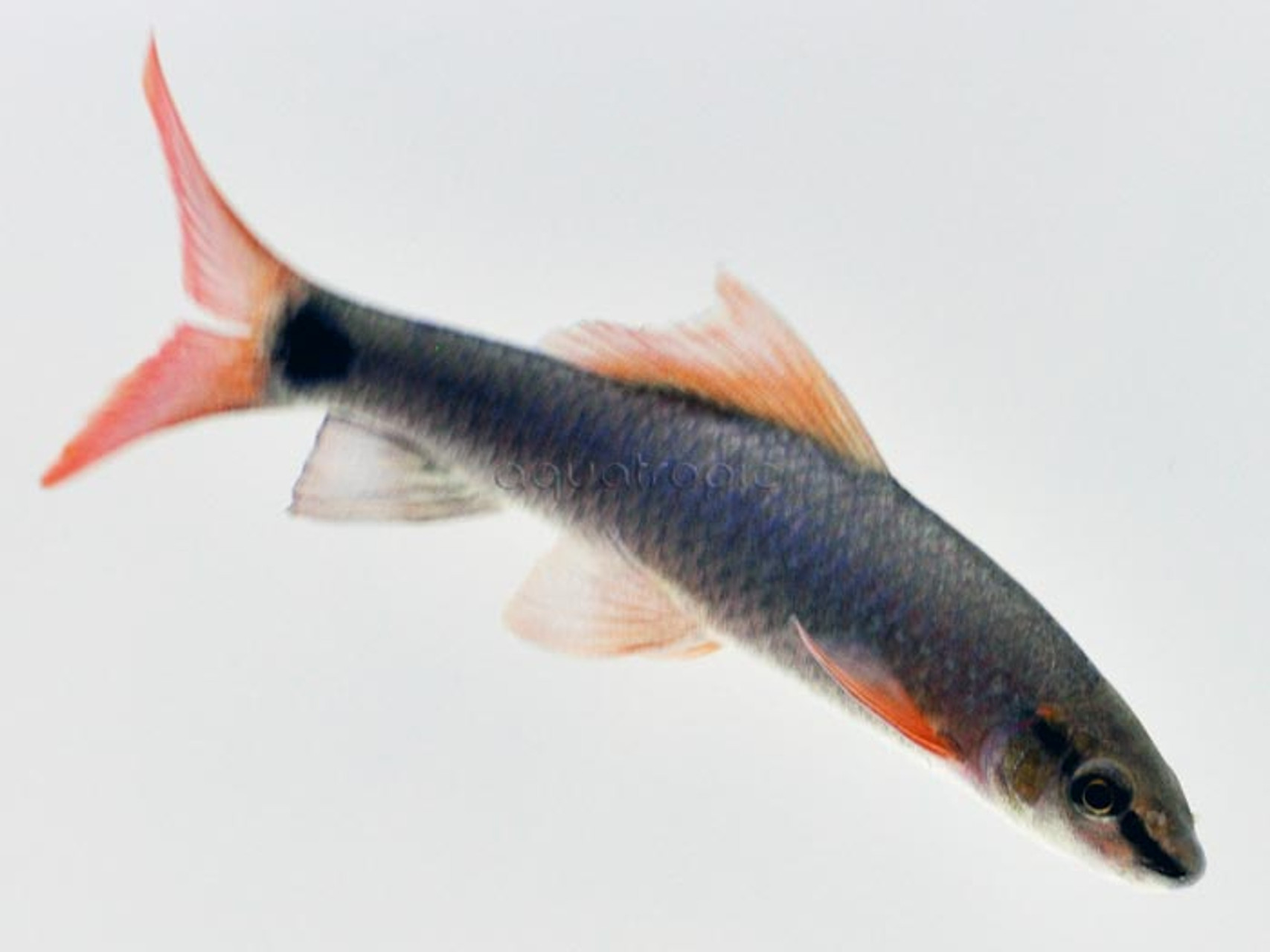The Rainbow Shark (Epalzeorhynchus frenatum)

The name ‘Rainbow Shark’ is a bit of a stretch for Epalzeorhynchus frenatum, as this fish is neither a shark nor is it all that rainbow-like. The bright red fins are definitely attractive and give his handsome fish a sleek appearance, while the rest of the body is a steely grey—hardly the stuff from which rainbows are made, unless your rainbows are all red and grey. And this bony fish actually belongs to the same family of fishes as minnows and barbs, with the only thing shark-like about it being the elongated body and prominent dorsal fin.
In the wild, you can find E. frenatum lurking in the major river systems of Thailand and other nearby regions, though it has increasingly been reported as rare in much of its former range due to manmade changes to its habitat. The natural diet is said to be “aufwuchs”, which refers to the mix of algae, worms, crustaceans and insects that abounds on rocks. Aquarium specimens will thus benefit from a diverse diet of prepared, frozen and live foods, and they will even feed on certain vegetables—shelled peas, zucchini, spinach—if they are provided. But, despite their taste for greenery, it’s rare for them to bother aquarium plants.
With a maximum size of six inches, this active fish will be most at home in a large, long aquarium measuring four or more feet in length (55 gallons or more). It’s important to provide enough space, as this fish can get quite feisty with age. Full-grown specimens often harass more peaceful fishes to death if not provided with the correct surroundings and tankmates. You’ll need to be careful mixing E. frenatum with other similarly shaped bottom-dwellers (Garra, Siamese Algae Eaters, Chinese Algae Eaters), though they are said to be more peaceful towards loaches. In smaller tanks, you might find your Rainbow Shark will pick on almost any tankmate that’s smaller than it, even bullying similarly pugnacious hellions like Tiger Barbs.
But, aside from its rambunctious personality, this beautiful fish is highly recommendable. With its ease of maintenance and tolerance for a wide range of water conditions, this species can be mixed with almost anything in the right setup, even with aggressive groups like mbuna cichlids. However, mixing more than one shark in a tank can be a challenge, as these are territorial by nature. In a large enough aquarium (100 gallons and up), a group of juveniles specimens can be added together and allowed to mature. They’ll work out their pecking order, but it’s unlikely to see any successful breeding, as aquarium specimens are typically all bred in large ponds with the addition of hormones to induce spawning.